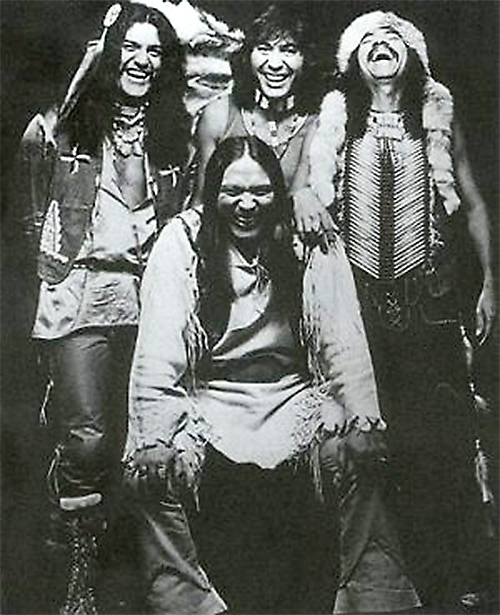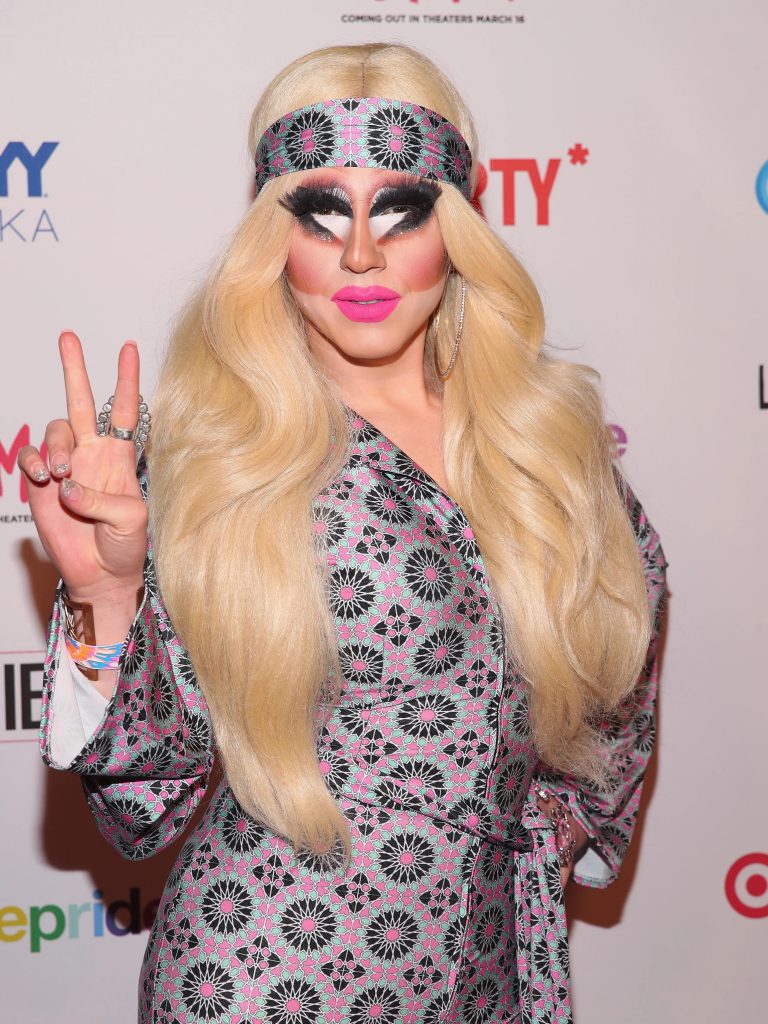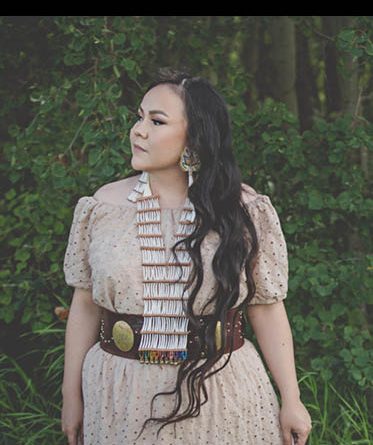Four Native American artists to celebrate Native American Heritage Month
Discovering new and existing Native American artists who have dedicated their lives to spreading the history and beauty of their culture.
With Halloween now done and gone, we’ve swiftly moved into November. As the leaves get crunchier and the air gets colder, we’re also on the cusp of Thanksgiving. This is precisely why I thought this would be the perfect moment to celebrate the people who have suffered the consequences of whitewashed history and have continuously been at the center of oppression during this season. Native Americans have a profound, embedded history in American soil that should be celebrated and admired. So, I will be showcasing four artists I thought deserved the spotlight for this week’s issue.
Many classic rock and Marvel fans might be familiar with the band Redbone. It is a highly influential rock band, signing their record contract back in 1970. It was led and created by two brothers, Patrick and Candido Vasquez-Vegas (also known as Pat and Lolly) with Yaqui, Shoshone and Mexican descent. Their music adventure began by playing “surf” music, as their record label at the time insisted that the world was not ready for a duo of mixed, Mexican American indigenous brothers making music heavily influenced by their ancestry. For years, they continued to perform surf genre music, appearing on musical variety series through cable, and performing at venues on the Sunset Strip.

After multiple name changes, the duo eventually decided to settle on one solid idea: create an all-American Indigenous band. Thus, Redbone was born, with the addition of new band members Peter DePoe and Robert Anthony Avila. Redbone charted number 21 on the Billboard Hot 100 with their single, “The Witch Queen of New Orleans.” But the one that perhaps everyone is familiar with (maybe even unknowingly) is “Come and Get Your Love.” This song topped as number five on the Billboard Hot 100 and went on to become certified gold.
Most recently, this band has sprung back into recognition after this hit single was used as the theme of the 2014 “Guardians of the Galaxy” movie. By creating this incredibly iconic and unforgettable song, Redbone made history as the first Native American band charting on the Billboards, but the love for their roots and ancestry is often erased. The band was highly influential to other bands during the 1970s through their unique swamp rock style.
Next, we have Jaune Quick-to-See Smith, a Native American visual artist from the Salish and Kootenai tribes. She is renowned by her community as an educator and activist. Starting her artistic journey in the mid-1970s, she focused on creating abstract paintings and lithographs while also utilizing mixed media with printmaking and textiles. Through her art, she creates socio-political commentary on the cultural appropriation, oppression and abuse that Native Americans have had to endure for centuries. Her initial works depicted pictographic symbolism which Jaune described as a form of self-portraiture. Later, she embraced the label of abstract expressionist, as her works could depict the collective emotions of the old and new generations of Native Americans.
Jaune started an impactful series of the name “I See Red,” which she still continues to paint to this day. In this series, she makes perfect use of juxtaposition by painting classic symbols of her Indian heritage branded alongside classic depictions of colonialist-rooted consumerism: newspaper cutouts, sports team flags, road maps, bumper stickers, etc. It’s this collage-esque style alongside her strong use of the color red that distinguishes her from artists around the world. It’s what has won her works a place in some of the most renowned art museums, such as The Museum of Modern Art, The Metropolitan Museum of Art, the Smithsonian American Art Museum and many more.
It’s music that perfectly reflects the connectedness that humans can have with nature.
Fawn Wood is a new generation Cree and Salish musician. She made her debut through social media: YouTube, Instagram and TikTok. She has always been loyal to her roots and would often take part in her tribes’ Powwows and Round Dance traditions alongside her parents. She started singing to the beat of big drums from an early age. She began her singing career through nation-wide drumming and singing competitions and eventually earned a spot singing in the 11th Annual Native American Music Awards (NAMMYS). From there, she became well-known and admired by different tribes across the country and signed a record deal with Buffalo Jump Records. She has gone on to be an active social media star and performs live while educating her viewers on Native American music and customs.
Wood’s music radiates a sense of warmth and belonging and comes from a woman who is sure of her origins. Her songs speak about both negative and positive emotions alike, yet perfectly demonstrate a peaceful balance through symphony. The best way it could be described is that it sounds like nature itself, which Fawn also openly appreciates and advocates for. It’s music that perfectly reflects the connectedness that humans can have with nature. Blood and tradition are shown through her drum work, vocal droning and even throat singing exhibited through her discography, but you can also sense Fawn’s own nostalgia, recounting the stories told by her ancestors and thinking back on moments of her childhood.
Finally, we have a world-renowned queer icon and activist, Trixie Mattel (she/her). Prior to my research, I did not know about Trixie’s Indigenous ancestry, but she is indeed Indigenous, specifically, from the Ojibwe tribe in Wisconsin. Before becoming Trixie Mattel, a young Brian Firkus (he/him) grew up in an abusive household where he found himself seeking comfort in dolls, idolizing Barbie and desperately wanting to own one for himself. It wasn’t until after he was taken away and relocated to his grandparents’ house by Child Protective Services that he was able to fully embrace his true self and begin pursuing a career in music.

From there, he began dabbling in drag as he pursued his studies. But it was only after taking part in a “Rocky Horror Picture Show” musical during college that he decided on the name “Trixie” for his femme persona. “Mattel” came from his love for Barbie, with the explanation that a last name is supposed to symbolize the “unity of your makers” or “your manufacturers of sorts.” So, Trixie Mattel was born, and has now become one of the most well-known queer artists and drag queens in history after winning season three of “Ru-Paul’s Drag Race: All-Stars.” Although Brian does not speak of his past that often, Trixie feels more comfortable talking about her ancestry and past. Trixie admitted that it’s more comfortable talking about trauma when she’s wearing her signature doll-like makeup and avant-garde clothing.
But drag – for both of them – is a way to take something negative and make it positive. It’s a way for Brian to feel more comfortable loving himself outside of Trixie, accepting the past and letting go. Though Trixie is by far the most white-presenting individual on this list, many queer and Native American fans have rallied behind Trixie with pride. They have labeled her as a Native American queer activist because she openly stands against discrimination of any kind. She has often talked about these issues on her podcast.
I’d like to close things off by saying that this was a learning experience for me as a writer too. I encourage those reading this piece to read more on Native American oppression, culture, and histories. And if you are interested, check out the artists I covered above.



